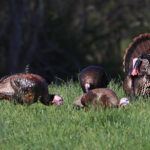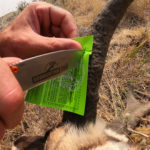As if there weren’t already enough variables and things to continually be tinkering with in the world of archery, let’s introduce this massive and highly debatable question: do you need specific arrow setups for specific animals?
It’s a fair question, and while you may have a gut-level answer that pops into your head immediately, keep in mind that probably half the other people reading this had the exact opposite gut-level answer. It’s not as simple as an obvious yes or no, simply because arrows kill differently than bullets, and the needs of the bowhunter are determined by a lot more than mere projectile weight and kinetic energy at the moment of impact.
That being said, let’s unpack the way to think about this issue, which will hopefully lead you to your own conclusions based on your particular situation.
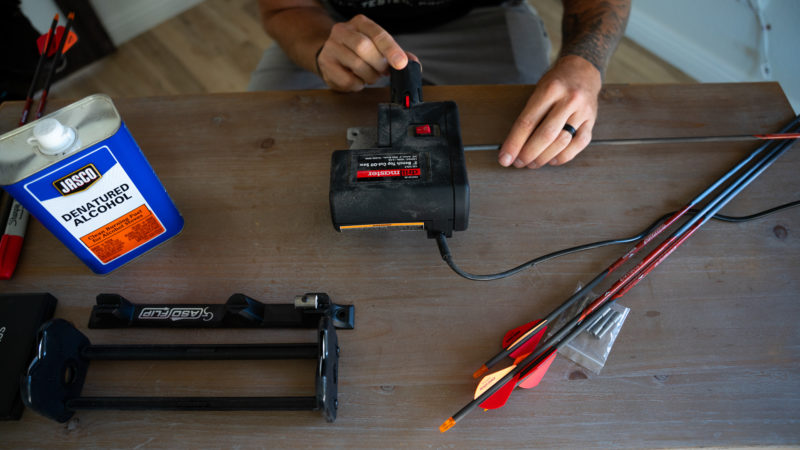
There are certainly pros to both, and plenty of successful hunters on both sides of the argument. Personally, I’m not a guy who loves to tinker with my setup. I like to get the bow dialed in, get it sighted in with an arrow that I feel confident in, and then just leave it alone and hunt every tag I get with it.
The thought of re-sighting the bow simply because I want to gain a few FPS or greater kinetic energy downrange for a particular species sounds like so much unnecessary work. That’s why for years I’ve simply picked an arrow setup that would be rock solid for elk (the biggest animal I hunt in a typical year), and then just hunt everything else with that same arrow. If it’s a little overkill for a mule deer, or a whole lot of overkill for a 40 lb. javelina…so be it.
All that being said, I’m coming around to the idea that there may be certain species and certain hunts where customizing my arrow setup might mean the difference between a notched tag and going home empty handed (or worse, wounding an animal you can’t recover).
Yes, it’s going to involve messing with my bow – and if I want to go back to my original setup after the hunt – putting everything back again. But, if it really could be the difference between success and failure, it’s more than worth the effort.
Case in point: I finally drew an archery antelope tag in my home state of Arizona this year, and I couldn’t be more excited. However, the more I study these speed-goats and my intention to hunt them spot and stalk in open country, the more I’m realizing that arrow speed is going to play a huge role in making this hunt successful.
The massive elk arrows I’ve been slinging nice and slow, but with huge impact, are not ideal for the probability of longer shots on what is absolutely the fastest animal I’ve ever hunted. So, I just filled my quiver with arrows that are almost 150g lighter because I can’t afford to send it at 70 yards when there’s time for the pronghorn to run a quarter-mile before the arrow even gets to him.
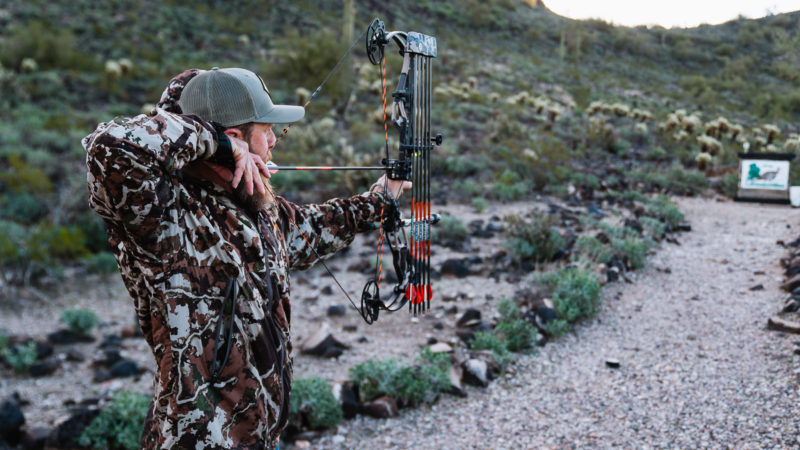
On the flip side, there are certain animals that are so large and so tough, you may need to consider sacrificing some speed for an arrow with a bit more punch. I actually know plenty of guys who hunt elk with relatively light arrows (somewhere in the neighborhood of 450g), so I’m certainly not saying it can’t be done.
I will say that if you find yourself sitting on something unique like a moose tag or some other large, thick boned animal, you may want to consider a heavier than normal arrow setup to make sure you can pass far enough through the animal to make an ethical kill.
Why Does Any of This Matter?
If you’re not someone who travels to multiple states hunting a wide variety of species, this may seem like way too much thought dedicated to a question that isn’t even on your radar. But, as I mentioned before, your ability to succeed on certain hunts might actually come down to your arrow choice. It would be heart-breaking to do everything else right, and then miss or wound your prey simply because you didn’t think through your arrow’s suitability for that particular hunt.
The main factors to consider when choosing an arrow for your hunt are: how long will the shots likely be, how large/dense is the animal, and how jumpy/quick is the animal? If your current arrow setup lines up as a good option when you consider those three factors, then don’t mess with a thing. But, if you think through what would be best for those three factors and it isn’t your current arrow, then you have to consider a change.
Let’s walk through a hypothetical example just for fun. If you’ve guzzled the heavy arrow/extreme FOC Koolaid (no judgment…I’ve played around with it too), and you’re looking at a hunt with a likely 70 yard shot on a very quick and jumpy animal (i.e. my antelope hunt), then the heavy arrow fails all three of those categories.
It’s too slow for the long shot, it’s way more kinetic energy than is necessary for a small and light animal, and once again, it’s too slow for the animal’s ability to jump, spin, and run away while the arrow’s still in flight. Using those three questions as a framework will help you determine if a change is needed as well as what you should start looking for when you begin shopping for a new arrow.

Can I Just Change Broadheads for Different Species?
It’s tempting to think of the broadhead as the archery equivalent of a bullet and neglect to look at the entire arrow as a finely tuned system that has to work together. If you were rifle hunting a whitetail deer and then a moose with the same .30-06, odds are you’d buy a couple boxes of different bullet weights to make sure you didn’t lose too much meat on the whitetail but had something heavy enough to drop the moose.
By that same logic, you may be sending 100g broadheads at whitetail, but then you decide to head out and chase elk and just grab some heavier/tougher broadheads for the 800lb bull you’ve been dreaming about. Sadly, it’s not that simple.
When you really dig into how the arrow setup works as a unit, every component affects every other component, and they’re all affected by your bow. This isn’t an article about the deep rabbit hole that is arrow setups, but let’s go over a couple generalities to consider if you haven’t done a ton of research into arrows yet.
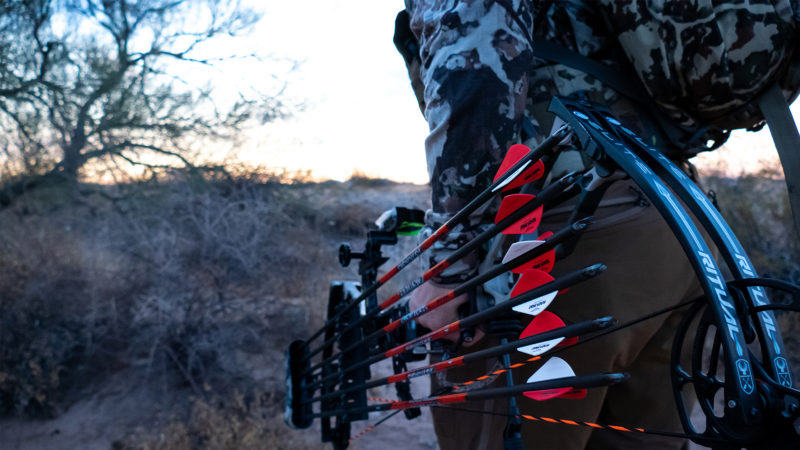
In general, the lighter the arrow, the weaker the spine. Also, the longer the arrow, the weaker the spine. The weaker the spine, the less weight you could or should put up front with your broadhead. This is why the guys shooting massive broadheads of 200-300g+ tend to shoot surprisingly stiff-spined arrows…it’s because the weight up front causes the arrow to flex as it’s initially pushed from behind by the bowstring.
If you have a weak-spined (translation – super flexible) arrow pushing a massively heavy broadhead, it’s going to flex way too much, take longer to recover in flight, and give you some accuracy and consistency issues. I say all of that simply to point out that if you want to change your broadhead for a different species (assuming you’re changing weight and not just style), then you’ll have to look at the entire arrow setup to make sure they’re compatible.
Archer’s Advantage is an online software that is incredibly affordable that will let you put all these combinations together on paper before you ever buy an arrow or broadhead. It’s well worth it if you’re thinking about changing arrow setups.
One last factor to consider is the toughness of the broadhead you plan to use and making sure it’s matched to the animal as well. I certainly don’t want to start the fixed-blade vs. mechanical debate, but some animals are better suited for hunting with mechanicals than others.
I have killed an elk with a mechanical, but I didn’t get a pass through and the blades were massively bent when I found the arrow. Now, before the mechanical guys blow up my inbox, the elk did bleed out quite quickly and I found him within 100 yards. No disrespect to the mechanicals.
While fixed vs. mechanical doesn’t apply to all three of the criteria we’re thinking through in our arrow setups, it will play a part when you consider how big/dense the animal is. Bigger animals with tougher hides, denser bones, and huge musculature may require something like a one-piece two blade to punch through and do the damage you need it to do.
Conversely, a mechanical might actually be the better choice for lighter thin-skinned animals since the extra carnage they can create will theoretically lead to a quicker kill.
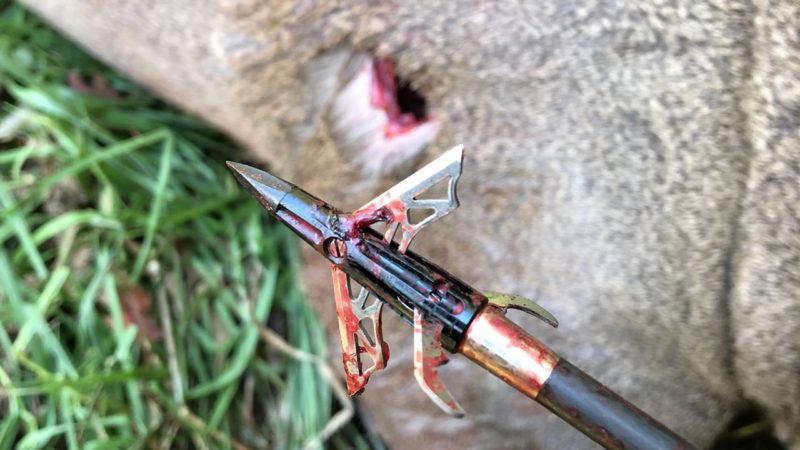
Wrapping Up
In short, whether or not this even applies to you depends on your hunting habits. One state and one species – just keep shooting what works for you. Hunting all over the place and animals ranging from 50 pounds to 800 pounds – you might need a couple setups to have the best chances of success. If I had to recommend a solid middle ground on the issue, I’d say that a good all around arrow is a fine option for most ungulate species.
A hunter could spend years chasing pigs, deer, elk, even bears with one tried-and-true arrow setup. However, there are probably a few hunts and species on either end of the spectrum where it’s just better to do the work and create the crazy-fast and flat arrow, or the javelin that’s just gonna punch through anything you send it towards. These may be the exceptions, but at least now we’ve established a framework that can help you determine if you need to change in the first place and guide you in the right direction if you do.

 By
By 
